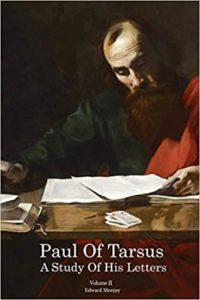Title: Paul of Tarsus: A study of his letters Volume ll
Author: Edward Monjay
Publisher: Page Turner Press and Media
ISBN: 978-1649082213
Genre: Religion
Pages: 165
Reviewed by: Lisa Brown
Hollywood Book Reviews
A scholarly exploration based on both scripture and archeological evidence, author Edward Monjay’s Paul of Tarsus: A study of his letters volume ll, presents to inquiring minds, a deeply intriguing work which takes readers on a thought provoking and perhaps ultimately perspective-altering journey through the writings and beliefs of the apostle Paul.
Moreover, as an author of religious text, as well as an apparent Biblical scholar, this is not Edward Monjay’s first published work. Previously, author Monjay has published a dedicated repertoire of religious works which includes five other books, each dedicated to learned explorations of religious doctrine related to: The fallen Churches; A Guide to the Narrow Path; and Paul of Tarsus Volume l.
Integrally, author Edward Monjay heartily explores the many facets of Paul’s doctrines and behaviors. This ultimately fastidious work delves deeply into the doctrines of Paul of Tarsus that do not parallel the laws of Yahweh (God). Each chapter brings into focus a particular example of Paul’s egoic contradiction of Yaweh’s laws evidenced by contrasting the doctrines of Paul against scriptures obtained from the scriptural texts gleaned from three different Biblical sources: The Hebrew Roots Version of the Bible, The Darby Bible as well as The King James version.
Furthermore, what truly ignites the mind and spirit about this text is the multiple theological assertions made by author Monjay in reference to the teachings of true salvation, the precept that Yahweh stated that Babylon worshiped Baal and America is Babylon as well as, many people think they are worshipping the true God but instead are worshipping Baal. Also, how following Paul’s doctrines will lead you to hell, Paul played both sides of the fence and was leading people to the devil, how pagan beliefs have been kept in the modern-day churches, as well as Paul’s claim that Yahshua (Jesus) was an angel not human; he lied about his entire message, it was an experiment. Additionally, he visits the relevant history of Biblical events such as the alterations of the images and names of God, Jesus, and even Mary.
Altogether, this is not a delicate read that paints religious tenets with a rose-colored brush. Instead, it paints a different actually shocking portrait of a revered saint/apostle from the time of Yahshua (Jesus), who was not all he was made out to be, to Christians.
Ultimately, I found Paul of Tarsus: A study of his letters Volume ll, to be truly an astonishing read, that both intrigued and served to edify as well. This thoroughly detailed work is sure to make what would be to many laypeople shocking assertions about one of the most important figures of the Apostolic age. And, as far as I knew, Paul was called the second “Jesus” because he was supposedly spreading the teachings of Jesus with a large following. This is definitely a must-read for spiritual seekers. It is an eye-opener.

